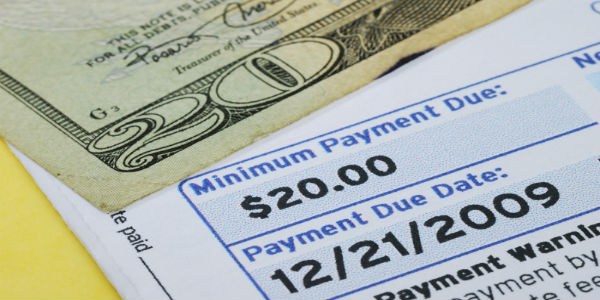Pay maximum attention to the minimum payment

Anyone who has taken out a personal loan, home mortgage or signed up for a credit card is familiar with the concept of the minimum payment. What many consumers are less familiar with, however, is the minimum payment’s impact on their overall debt picture.
As logical as it may be, particularly for those of us working in finance day-in and day-out, there is a widespread misunderstanding of how dramatically paying only the minimum can impact the lifespan of a loan. Evidence of this base confusion can be seen in the intense scrutiny regulators have paid to lending disclosures in recent years.
In the credit union industry, more lenders are looking at ways to help borrowers better understand the consequences of the minimum payment. Beyond that, they are considering different calculations of the minimum payment to help those borrowers intent on paying only the minimum get their loans paid off more quickly. Doing so also increases the value of the lenders’ portfolios. The result is a win-win – the credit union assures repayment in a timely manner and the borrower spends less in interest payments over the life of the loan.
To take a closer look at your credit union’s minimum payment strategy, start with the credit card portfolio. Begin by calculating the results of two hypothetical minimum payments for the same principle. An example may be 1 percent of the balance plus interest and fees and 1.5 percent of the balance plus interest and fees.
Now look at your portfolio segments and apply both payments to each. Compare the results. Which segments are directly impacted by a change in the minimum payment? How much money does the change represent? How might new purchases affect minimum payment calculations?
In a recent engagement with a U.S. financial institution, our analysts performed a similar calculation and separated the results into two categories:
- Minimum Payers: Cardholders who make only the minimum payment on a monthly basis.
- High Payers: Cardholders who pay more than the minimum payment within each billing cycle.
We found that for Minimum Payers, an increase in the minimum payment guaranteed they would pay a higher amount each month. Therefore, the total balance associated with the card would deplete much faster than normal, and the account would also be less expensive for the card issuer to maintain.
For High Payers, the advantage of a higher minimum payment comes if an account has multiple APR balances. Many card accounts have more than one APR – one for purchases and perhaps another for balance transfers. There may also be purchases at a special promotional APR. The Credit CARD Act of 2009 mandates issuers apply amounts in excess of the minimum first to the balance bearing the highest rate of interest. Only after applying the payments there can the issuer apply them to successive balances bearing the next highest rate of interest. If the minimum payment is 1.5 percent instead of 1 percent of the balances, the balance is shrinking and the amount on which the highest rate of interest is being charged is reducing as a result. Therefore, the lender is allocating funds to lower rates on an aggregate level.
So what did we learn? There is little, if any, downside to increasing the minimum payment, especially if the card issuer’s goal is to help the cardholder be more financially savvy. In fact, in the cardholder’s view, it makes good financial sense to increase the minimum payment so that less interest is accrued. It also makes the account more profitable for the issuing financial institution, making the practice a win-win.





